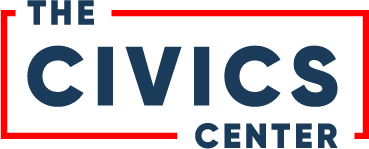Our Newest Voters Don’t Count (But They Should)
Polling misses millions of them, they don’t see themselves reflected, and the vicious cycle continues.
Four million Americans turn 18 every year – that’s 16 million between Presidential election years. If history is any guide, more than half of them will be registered by Election Day, even if they are not registered today, and more than 75% of those registered will turn out.
If you’re a young person, and you think opinion polls don’t reflect your views, it’s because they don’t. Pollsters are not looking for you in order to ask the right questions. Press coverage makes it even worse, as the narrative gets baked into yet another political cycle. We can’t blame you for becoming cynical and believing the system isn’t working for you.
This is all because pollsters don’t consider you a “likely voter,”—someone who is over 18, registered, and therefore in the publicly available “voter file”—who pollsters believe based on their models, is likely to turn out in November. You can see this in policies and poll descriptions from Gallup, Monmouth, Quinnipiac, Times/Sienna, and YouGov.
If the term “likely voter” were to reflect the full strength of young people who are actually likely to vote in November, pollsters would have to make some effort to find and to survey likely voters who are not yet registered.
We know that registration rates for the youngest voters typically increase dramatically as we approach presidential elections. And we know that in every presidential election going back to 2004, more than 75% of registered youth turned out. Putting these points together, we know that there are millions of young people who are in fact likely to vote in November and who current polling methods miss.
When young people are not registered, they are not accurately polled, nor are their concerns addressed by candidates and campaigns.
The problem of focusing only on registered voters and “likely” voters extends beyond polling. Candidates and campaigns – especially those that do not have huge budgets – typically rely on voter files and models of who is likely to turn out as they craft their outreach messages and formulate the issues at the center of their platforms. They have limited time and resources. Their consultants and advisors have a playbook that they repeat in each cycle. When young people are not registered, their views and concerns remain unaddressed.
Unless something changes, even those who care the most about accurately reflecting youth voices will continue these same practices. Young people will continue to be left out of polls, and polls will lack predictive value or even the descriptive snapshot value they claim.
The best way—and maybe the only way—we know to break the cycle then, and for young people to begin to be fairly represented in the polls and to get the attention they deserve from pollsters, candidates and campaigns, is simply this: Young people must register or preregister to vote as soon as they are old enough.
States must make data available about the numbers of people preregistering. And high schools must embrace the important work of voter education and registration, so that young people’s voices are treated with the same importance and urgency as those of older Americans.
The Civics Center gratefully acknowledges Thomas Connor Hutto, who contributed to this post.
